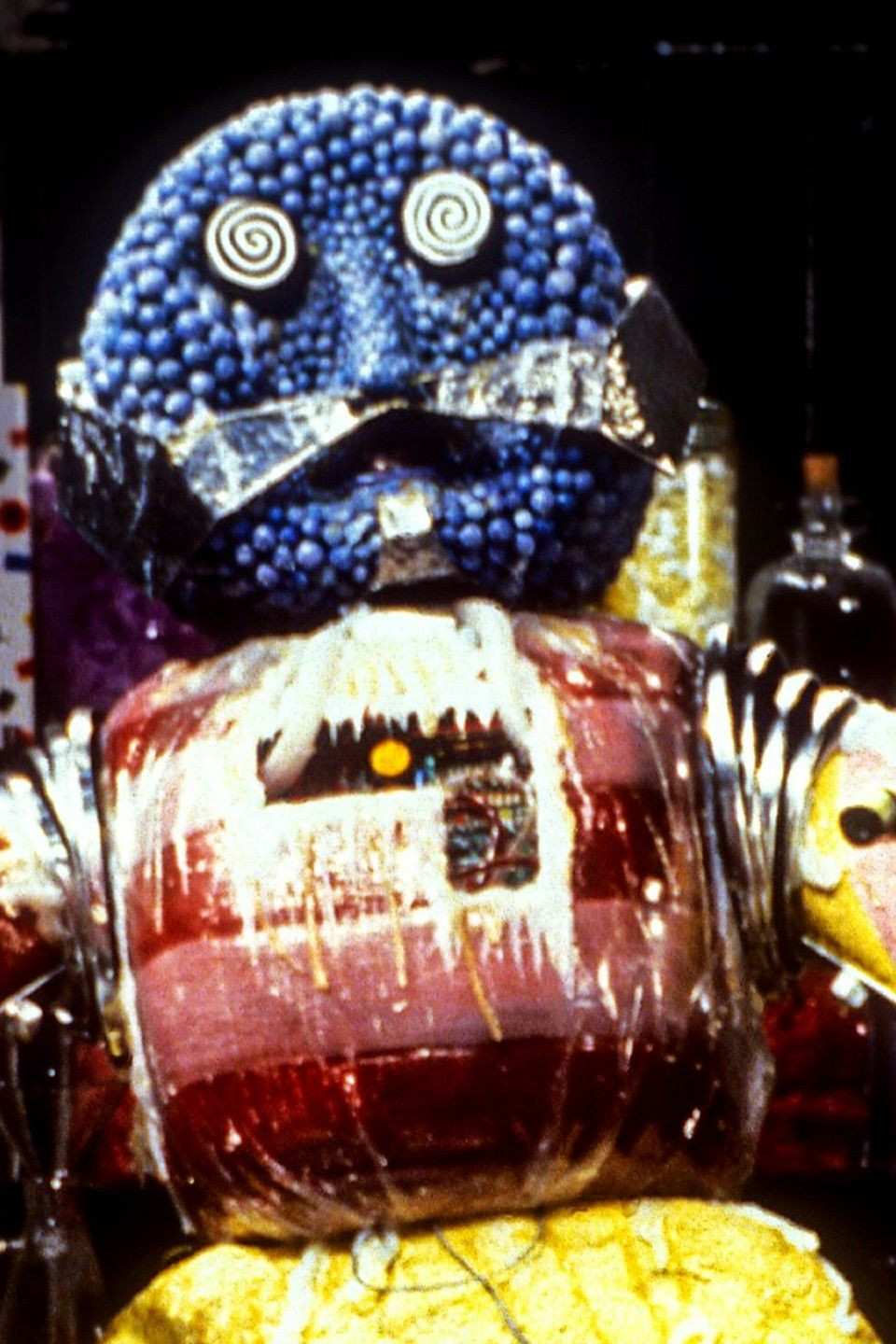Often, fans assume that fan service, callbacks, and retrospective storytelling are exclusive to Doctor Who specials or multi-Doctor stories. However, the later seasons of classic Doctor Who, particularly the seventh season of the Seventh Doctor’s era (Season 25), cleverly incorporated these elements. This season, starting with its very first story, exemplifies this approach, but unlike modern storytelling, these references are subtle and integrated naturally, laying the groundwork for future narratives, some of which, sadly, never came to fruition due to the show’s cancellation.
Yet, the brilliance of this season lies in its accessibility. Each story functions effectively as a standalone adventure. You can dive in and enjoy the ride without needing extensive background knowledge of Doctor Who lore.
Remembrance of the Daleks – Written by Ben Aaronovitch
This four-part story throws us right into the heart of 1963, with the backdrop of John F. Kennedy’s iconic speeches echoing through the airwaves. As a mysterious Starship descends, we are introduced to a young girl outside Coal Hill School, the very place where Doctor Who began. She observes the arrival of the Doctor and Ace, who are characteristically out of place. Ace, puzzled by the girl’s stare, is humorously reminded by the Doctor that her attire and the conspicuous ghetto blaster she carries are likely the cause. However, the Doctor’s attention is drawn to a less obvious anomaly: a blue transit van equipped with radio antennas. Dispatching Ace for refreshments, the Doctor investigates the playground, noticing peculiar markings on the ground, all while being observed by the same curious girl. He enters the van and encounters Rachel, a woman who questions him. Their exchange is cut short by a radio call reporting an attack on a group captain, introducing us to the counter-measures team, a dedicated group that plays a significant role in the unfolding events.
My Review: A Clever Return to Doctor Who’s Origins
“Remembrance of the Daleks” is a brilliant and self-aware story that takes us back to where it all began. While modern Doctor Who often signposts its references, this story operates with a delightful subtlety. The core narrative is easily accessible: it’s 1963, and the Doctor is manipulating two warring Dalek factions. However, beneath the surface, the story is rich with layers. Ace’s journey of discovering that history isn’t always black and white adds depth and complexity.
For viewers like myself, who watched these episodes as children and missed the intricate references to Doctor Who’s past, “Remembrance” was simply an exciting Dalek story. But crucially, it was the story that revealed a groundbreaking Dalek ability – they could climb stairs! This seemingly small detail had a significant impact on our childhood perceptions of these iconic villains.
 The Seventh Doctor and Ace stand in front of Coal Hill School, observing a blue van with antennas, hinting at covert operations and mysteries within the familiar schoolyard.
The Seventh Doctor and Ace stand in front of Coal Hill School, observing a blue van with antennas, hinting at covert operations and mysteries within the familiar schoolyard.
The Happiness Patrol – Written by Graeme Curry
This three-part story opens in a starkly different setting: a city at night. We meet a woman consumed by sadness, sitting alone on a bench. In this oppressive society, unhappiness is a crime. A man approaches, offering her company, revealing himself to be an undercover policeman.
Meanwhile, the TARDIS materializes nearby. The Doctor and Ace emerge, discussing dinosaurs, as the Doctor reveals they are on Terror Alpha, a human colony where something is clearly amiss. Intrigued, they set out to uncover the truth behind the manufactured happiness.
My Review: Sweetness and Subversion in a Dystopian World
“The Happiness Patrol” is often remembered for its seemingly absurd monster: the Kandyman, a creature made of sweets. This element can be deceptively dismissed as childish, reinforcing the notion of Doctor Who as a children’s show. However, to do so is to miss the story’s sharp satirical edge. The true monster isn’t the Kandyman, but the human authority figure, Helen A, who enforces happiness through fear and oppression.
The story is rich in clever wordplay and uses music as a powerful narrative tool, particularly when we encounter the true inhabitants of the underworld. There’s a distinct film noir atmosphere to the narrative, even as Helen A serves as a thinly veiled allegory for the British Prime Minister of the time, Margaret Thatcher, adding a layer of political commentary to this seemingly whimsical story.
 Helen A, the ruler of Terra Alpha, stands in a brightly lit, overly cheerful environment, embodying forced happiness and control, contrasting sharply with the underlying darkness of her regime.
Helen A, the ruler of Terra Alpha, stands in a brightly lit, overly cheerful environment, embodying forced happiness and control, contrasting sharply with the underlying darkness of her regime.
Silver Nemesis – Written by Kevin Clarke
“Silver Nemesis,” another three-part adventure, unfolds across multiple timelines. We begin in South America in 1988, where a group of soldiers, led by a former Nazi, tracks a mysterious object with the aid of a computer. The Nazi leader is also captivated by a silver bow. Simultaneously, we are transported to England in 1638, where a noblewoman and her servant practice archery with poisoned arrows, aware of the same object’s impending arrival. Using a primitive form of time travel, she sets out to intercept it.
Elsewhere, the Doctor and Ace are enjoying a peaceful afternoon of jazz when the Doctor’s pocket watch alarm goes off. Realizing Earth is in danger, he initiates a plan, seeking out the noblewoman and the landing site of the enigmatic object, just as the ex-Nazi and his men converge on the same location.
My Review: Time-Twisting Intrigue and Callbacks Galore
Despite being only Ace’s fourth story, “Silver Nemesis” creates the illusion of a much deeper, richer history between the Doctor and his companion. This is achieved through a clever narrative structure that involves time-hopping right from the start. The Doctor and Ace jump between their present, 1638, and Windsor Castle (twice, if memory serves), first to investigate a missing artifact and then to seek assistance from the Queen. Within the castle archives, the Doctor reminisces about past adventures and even dons a fez, predating its association with Matt Smith’s Eleventh Doctor. Adding to the layers of continuity, Ace fails to recognize individuals emerging from a spaceship, hinting at deeper connections the Doctor is aware of.
“Silver Nemesis” is packed with callbacks, including direct references to “Remembrance of the Daleks” and other nods to Doctor Who’s extensive past. This creates a sense of a continuous, interwoven narrative, reminiscent of the “Bad Wolf” arc that would later become prominent in modern Doctor Who.
The Greatest Show in The Galaxy – Written By Stephen Wyatt
This four-part story plunges us into the bizarre world of a mysterious circus. A ringleader addresses an unseen audience, introducing his peculiar performers. The Doctor and Ace receive a cryptic junk mail robot inviting them to this very circus. It quickly becomes apparent that something is deeply wrong, as two performers desperately attempt to escape. One manages to flee in an old bus, only to be attacked. The Doctor and Ace encounter a fruit vendor, a young man on a strange motorbike, an “Explorer,” and a young woman named Mags.
The Doctor, Ace, Mags, and the Explorer join forces and head towards the circus by bus, narrowly escaping an attack by a robotic bus conductor. The group becomes separated. Mags and the Explorer reach the circus ahead of the Doctor and Ace, witnessing the horrifying death of a performer. Disturbingly, only Mags and Ace can hear the screams.
My Review: Hidden Horrors and Foreshadowing Future Themes
“The Greatest Show in the Galaxy” masterfully explores the concept of hiding in plain sight, using the veneer of respectability to mask sinister activities. While the story introduces the somewhat overused trope of a companion being afraid of circuses, it quickly moves beyond this, becoming a tale of hidden terrors and desperate survival. The robotic bus conductor and the Harlequin clown are striking visual elements that clearly foreshadow the Clockwork Droids and the Kerblam Man from later Doctor Who series. In fact, the premise of “Kerblam!” – a mysterious object arriving on the TARDIS – echoes the opening of “The Greatest Show in the Galaxy.”
This story highlights a storytelling approach that values audience engagement and deduction, a style often attributed to Chris Chibnall’s era. It emphasizes letting the audience piece together the mysteries, a quality that, arguably, has been less prevalent in recent years. While CGI advancements offer limitless visual possibilities, “The Greatest Show in the Galaxy” reminds us of the importance of solid storylines that respect the audience’s intelligence, avoiding simplistic gimmicks in favor of engaging narratives.
 The Psychic Circus ringleader in elaborate costume presents a sinister and unsettling spectacle, hinting at the dark secrets and dangers lurking beneath the surface of the galactic entertainment.
The Psychic Circus ringleader in elaborate costume presents a sinister and unsettling spectacle, hinting at the dark secrets and dangers lurking beneath the surface of the galactic entertainment.
Spoiler Warning: The following section contains information that may spoil future storylines beyond Season 25.
Expanding beyond the televised stories, Big Finish Audio Productions stepped in to continue Mags’s story, much like they did with the Counter-Measures team. Three audio dramas – “The Monsters of Gokroth,” “The Moons of Vulpana,” and “An Alien Werewolf in London,” written by Matt Fitton, Emma Reeves, and Alan Barnes respectively – further develop her character. While I haven’t personally experienced these audio adventures, Big Finish’s reputation suggests they would have done a remarkable job in expanding Mags’s narrative.
This continuation across different media underscores the importance of allowing audiences to choose their definitive versions of characters and stories, rather than rigidly attempting to please everyone or recapture past successes.
Overall Review: Season 25 – A Season of Subtle Depth and Enduring Influence
Season 25 of Doctor Who is a collection of stories that took the Doctor and Ace to new and intriguing locations while subtly enriching the lore surrounding familiar enemies. Crucially, it achieved this without alienating new viewers. Like the Second Doctor’s quick explanation of Daleks to Polly and Ben in his debut, Season 25 weaves in background information organically, rather than relying on exposition dumps to bring new companions (or viewers) up to speed. This contrasts with later approaches that sometimes overused the “world is dangerous” trope to educate new companions.
While I wouldn’t necessarily label Season 25 as the “golden age” of Doctor Who – as every era holds a special significance for different fans – it undeniably showcases a sophisticated approach to storytelling. It demonstrates the power of building narratives from the ground up, prioritizing story first and layering in deeper elements later, rather than relying on mystery boxes or grand reveals.
Season 26, the final season of the classic era, would see Andrew Cartmel’s overarching plan for the Seventh Doctor come further into focus, becoming more overt. This approach, I believe, significantly influenced later Doctor Who showrunners, including Chris Chibnall, demonstrating the lasting impact of Season 25’s subtle yet sophisticated storytelling.

